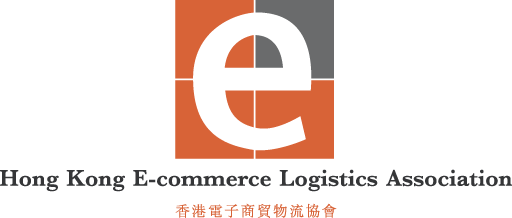電子商貿報關事宜
E-commerce Customs Affairs
電子商貿把全球各地的商戶與消費者連繫起來,並為企業的增長及拓展帶來無窮的機遇。然而,由於人口、文化、環境、技術、經濟和海關渠道的差異,為電子商貿帶來挑戰。鑒於全球220多個國家及地區的海關法規不斷變化,即使對於極具經驗的托運人來說,海關事宜仍可能是一個相當棘手的議題。
每個國家海關的主要使命是管理關稅及稅收流程,並監控國家非法產品的進口。對於電子商貿而言,報關準備及提交準確的文件至關重要,但這並不局限於對合規性而言。管理清關出錯或會對貨運時間構成影響,從而引致海關延誤、罰款及客戶滿意度下降。常見的錯誤包括:商業發票錯誤、價值不符、協調製度 (Harmonized System)代碼、漏報原產地及限制物品的進口許可證。
為提高海關合規性,以下為有關如何準備海關發票的一般指南:
- 發票及裝箱單等海關文件必須以實物或電子方式向海關提交。不同的貨物及運輸模式有可能需要提供不同的解決方案。
- 良好的產品描述需清晰具體,包括以下信息:產品基本描述、材料成分、產品用途、品牌、二手或全新產品及製造商。
- 發票可能會列出協調製度(Harmonized System)代碼,以便海關準確確定關稅和稅收。在個別情況下,出口國和進口國之間的協調製度代碼的格式或有差異。例如,協調製度代碼的長度;香港的代碼為8位數字,而美國則為10位數字。
- 槍支、氣槍、酒精飲料、活體動物、生物製品及生物製品等敏感產品可能會受到當地政府或承運商的限制。闡明並取得相關要求的許可證/執照十分重要,以避免可能出現的退貨或丟失。
除文件外,進口關稅和稅務亦是商戶考慮的關鍵因素。雖然香港是一個自由港,對大部分產品均不徵收關稅,但大多數國家都有自己的稅務和關稅制度。這不僅是商戶或消費者需要支付多少費用,還會影響電子商貿企業的業務策略,例如他們的線上運輸策略、倉庫位置及貨運整合模式。托運人需了解的以下重點:
- 許多國家都有最低限度税收,這意味著在清關過程中不徵收關稅或稅款的估值上限。該值可能因國家/地區而有不所不同。例如:美國為800美元、英國為135英鎊、歐洲為150歐羅、日本為10,000日圓(2022年6月份數據)。
- 關稅和稅款可由發貨人(商戶)或收貨人(消費者)支付。無論在哪種情況下,為避免出現意外費用及不滿,建議與線上消費者之間進行清晰的溝通。若商戶在稅後付貨模式(DDP)下發貨,並預先收取關稅/稅款,購物車中準確且最新的關稅/稅款計算器則至為重要。
- 為更妥善控制關稅和稅務的支付,可選擇設立一個海外法人進行計算稅務費用。尤其是在增值稅法規重組後的歐洲,擁有一個海外法人能簡化稅收和關稅的支付,而且或能降低成本。
儘管電子商務為企業和當地海關帶來了新挑戰,惟世界各地的海關官員都在不斷調節和完善。此外,擁有一家可靠並提供諮詢服務和技術解決方案的航運公司,將能有效節省大量寶貴時間。而透過明智地挑選方法,並能掌握關鍵,其實處理海關事宜能較以往順暢。總而言之,倘若海關事宜能得到妥善處理,就代表我們距離業務穩定地增長及讓客戶獲得正面體驗又邁進一步。
E-commerce connects merchants and customers from everywhere around the world. It brings boundless opportunities for businesses to grow and expand. However, it also brings challenges due to the difference in demography, culture, environment, technology, economy and customs channels. With over 220 countries in the world and the ever-changing customs regulations, customs affairs can be a daunting topic even for the most experienced shipper.
The primary purpose of customs in each country is to govern duty & tax processes and manage importation of products that are illicit in the country. Customs preparation and accurate documents are vital for e-commerce businesses, but not only for compliance. Managing customs clearance incorrectly can affect transit time, which results to customs delay, penalty, and negative customer satisfaction. Common mistakes include: commercial invoice error, value discrepancies, Harmonized System (HS) code, missing country of origin and import permit for restricted items.
To improve on customs compliance, below is a general guideline on how to prepare a customs invoices:
- Customs documents like invoice and packing list must be submitted to customs physically or electronically. Different carries and shipping models may offer different solutions.
- A good product description needs to be clear and specific, including info such as: generic product description, composition of materials, purpose of the product, brand, used or new item, and manufacturer.
- Invoice may list the H.S. code of the product for customs to accurately determine duty and tax. In some cases, the format of H.S. code may vary between export and import countries. For example, length of H.S. code in Hong Kong is 8 digits, while H.S. code in the US is 10 digits.
- Sensitive products such as firearms, airsoft, alcoholic beverages, living animals, biological products, and dangerous goods can be restricted by local governments or carriers. It is important to clarify and obtain the required permits/ licenses to avoid possible return or loss.
Further than documentation, import duty & tax is also a key factor for merchants to consider. Although Hong Kong is a free port that duty & tax do not apply for most products, the majority of countries have their own tax and duty system. It is not just about how much the merchant or consumer needs to pay. It can also affect an ecommerce business’s strategy such as their online shipping policy, warehouse location, and shipment consolidation model. There are a few key factors for shipper to know:
- De-minimis value is available for many countries, which means a valuation ceiling that duty or tax is not charged during the clearance procedure. This value can vary between countries. Examples are: USD 800 for the United States, 135 pounds for the United Kingdom, 150 EURO for Europe, and 10,000 Yen for Japan (data on Jun, 2022).
- Duty and tax can be paid by shipper (merchant) or receiver (consumer). In either case, a clear communication between online shoppers is recommended in order to avoid unexpected fees and dissatisfaction. If merchants ship under the DDP model and collect duties/taxes up front, an accurate and up-to-date duty/tax calculator in the shopping cart would be crucial.
- To better control duty & tax payments, setting up a foreign entity for billing purposes can also be an option. Especially in Europe after the restructuring of VAT regulations, having a foreign entity can simplify tax & duty payments and potentially reduce costs.
Although e-commerce has brought new challenges to businesses and local customs, customs officials around the world are continuing to adjust and improve. In addition, having a trusted shipping company who can provide advisory service and technology solutions can be a big time saver. By choosing your approach wisely, mastering this aspect can actually be less daunting than ever. At the end of the day, if customs affairs can be tackled properly, we are one-step closer for a stable business growth and positive customer experience.

